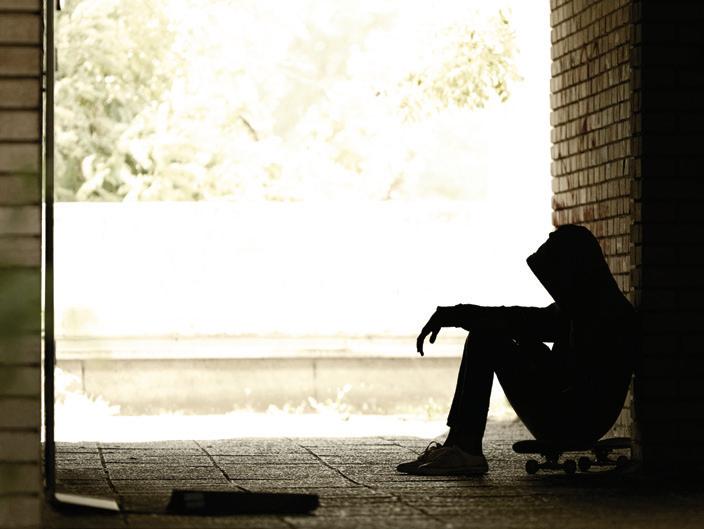
4 minute read
Common law defences of necessity & duress – By James Marcus & Stephen Ranieri
It’s time to raise the age of criminal responsibility
MICHAEL ESPOSITO, EDITOR
Advertisement
While the recent Black Lives Matter protests in Australia were sparked by the killing of a black American at the hands of a Minneapolis police officer, the focus here has been on the appalling rates of Indigenous incarceration and Aboriginal deaths in custody.
One of the most damning indictments of Australia’s record on Aboriginal justice is the rate of Indigenous children in detention. A recent report from the Guardian for Children and Young People indicated that more than 60 per cent of young people in Adelaide’s Youth Training Centre (YTC) are Indigenous.
The majority of children who come face-to-face with the criminal justice system have a background of disadvantage and trauma. About half the children who have come under youth supervision have also been subject to child protection services.
In South Australia, if a young person aged between 10-14 is charged with a crime, the onus is on the prosecution to prove that the young person alleged to have committed the crime had a sufficient understanding of the criminality of their actions. That understanding must amount to the knowledge that the actions were criminally wrong, and not just naughty.
This is designed to act as a safeguard against detaining young people who do not have the cognitive capacity to appreciate the gravity of their actions, but ultimately the system still incarcerates numerous children under 14. In fact, in 2018-19, 131 children in the YTC were under 14, and eight of them were just 10.
A 2017 Australian Law Reform Commission report into the incarceration of Aboriginal and Torres Strait Islander Peoples referred to a 2005 study which found that 90% of Aboriginal and Torres Strait Islander youths who appeared in a children’s court went on to appear in an adult court within eight years – with 36% of these receiving a prison sentence later in life.
Most other developed countries have outlawed the detention of children this young. It is time we did too and raised the age of criminal responsibility to 14.
Tough on crime proponents often argue that the community expects young offenders be incarcerated, but do people really want millions of taxpayer dollars spent on administering a system that facilitates a troubled youth’s transition to career criminal? Furthermore, does the community understand the nature of the offences that are alleged to be committed? Many young people who are involved in the Youth Justice system are ultimately being punished for things that are out of their control; and which stem from the unfortunate combination of childhood trauma and a lack of positive intervention.
Why would we send vulnerable young children down a path that often leads to a life of crime, when it would be far more effective, and humane, to give these children a chance to lead fulfilling and productive lives through evidence-based diversion programs?
One diversion model that has been proven to work is justice reinvestment. Under a justice reinvestment model, funds are redirected from the incarceration of young people into community driven initiatives that target key causal factors of crime, such as poverty, mental illness, intergenerational trauma, alcoholism and family dysfunction.
Justice reinvestment programs in Australia have had a hugely positive impact on disadvantaged, predominately Indigenous, communities.
Unfortunately, plans to establish a justice reinvestment program in SA were put on ice when State Government funding for such a program ceased in 2018. This was extremely disappointing as it was clear from other sites, such as Bourke in NSW, that a relatively small investment in vulnerable communities yields a huge improvement in health outcomes,
increased engagement in education, and a sharp reduction in crime, not to mention significant economic savings.
Again, the justice system disproportionately affects children in State care. Many children under guardianship of the State are detained for alleged offences against carers or the care facility. Police refuse to give them bail because the carers do not want the children back in the facility and the kids have nowhere else to go.
A lot of the behaviour that lands these children in custody would be treated much differently in a family environment, where the parental figures would impart discipline or have a discussion about the behaviour, without the need for police intervention.
We need to move away from a system that excessively punishes those who are most vulnerable, and instead give them the support they need to reach their potential.
An obvious starting point would be raising the age of criminal responsibility to 14, and providing ongoing investment in community focused solutions, such as justice reinvestment, to give disadvantaged children a path out of a miserable existence of entrenched criminality and towards a life that is far more fulfilling and fruitful.
The Law Society recently made a submission to the State Attorney General, The Hon Vickie Chapman, advocating for raising the age of criminal responsibility. To read the submission, click the “News & Advocacy” section on the Law Society’s homepage, then go to the “Submissions” section. B







